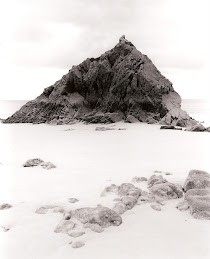Julius Caesar knew his conspiratorial onions in fearing Cassius for his 'lean and hungry look'; wishing Cassius were fatter, sleeker and sleepier and not awake plotting Caesar's death.
Pure heresy of course in these days when no-waste (or no-waist) 'Lean' is the only thing to be in commerce and industry. Show your average middle-manager a fleck of fat and he or she would as like as not faint clean away at the very horror of it. (Quite Victorian in its over-sensitive way.)
You can see why the metaphor works for the European, emotionally repressed, spirit: lean is almost clean, which is close to Godly [see previous for thoughts to the contrary!]; waste is bad, waste is dirt, waste even is pooh!
Lean appeals to the inner-Calvinist, panders to the super-ego: no wonder it is spreading like a rash as the latest of magic management fads.
I blame the Japanese - and no I am not being xenophobic or racist - for it was Toyota who developed 'lean' as an aspect of their all-conquering 'Toyota Way'. (Note - 'an aspect' and not the whole thing.)
Lean, in the original, is designing the workflow as a single piece that begins - note that well - with the customer order 'pulling' the work through the system. As a part - and note yet again only a part - of lean is analysing the flow of work to seek and eliminate any activity or function that does not directly contribute to the achievement of the customer's needs.
No costly, wasteful inventories that merely hide problems. No machines running simply because they can. Simple, easy, regular and visible flow - that's the aim. Toyota has learned through generations and over decades what needs to be done and how to achieve the aim.
Now 'visible' that is an important component to the whole thing of lean. Everyone - from front-line workers to CEOs - can literally see what is happening, what is working well, and where corrective action is needed and can be taken at once.
For that visibility to happen consistently Toyota works with a pentangle of S's: seiri, seiton, seiso, seiketsu and shitsuke. (For any whose Japanese is a bit shaky and thinks that could be five types of edible mushroom the five S's are in English: Sort, Straighten, Shine, Standardise, Sustain.)
The first three of these S's are the tasks: sort out what you need and chuck the rest away; keep everything where it is needed and nowhere else; keep clean what is needed so that it can be used at once. The latter two S's are the processes: have a standardised system for achieving the tasks and a workforce that is motivated and trained to use the system.
Sound complex? Not really in practice. Can be as straightforward as having a 'shadow board' for hanging tools. When a tool is to be used it is found at once on the board - because that's where it is always kept in good working order. When the tool is taken off the board, there remains a tool-shaped shadow to indicate the tool has been removed for use. Once finished with, the tool is cleaned and replaced on the board. (Did we not have this in our nurseries and play-groups - kids stuff really. That simple.)
But before we get carried away and begin to imagine we can rule the world through shadow-boards, let us recall that the 5 S's are but a part of lean and not the whole thing. And that lean is not the whole of the Toyota Way. 'Lean' is actually just a working shorthand for describing the Toyota Production System, which itself is only a half of the Way.
Lean is not piling your toys into neat rows and chucking out the redundant teddies - lean is designing your work to be the quickest, most cost-effective way of delighting your customers. And if customers are not delighted by the quality and price of your product then it matters not a jot that you can get it to them in three days instead of seven using five processes not fourteen.
Pause again having considered: 5 S's are but a part of Lean, Lean is but an aspect of the Production System and that the System is but one half of the Way. Got it? Yes? Then we may proceed.
The Toyota Way then is the complete 'DNA' of the company inherited from the founders over a century ago, adapted and refined through generations of usage. According to Gary Convis of Toyota - quoted in Jeffrey Liker's excellent book 'The Toyota Way' - the twin pillars that support the Way - or rather the double-helix within the DNA - are 'Continuous Improvement' and 'Respect for People.'
Now kaizen - continuous improvement - we all know as integral to quality. Do it well, but then do it better. Keep getting better all the time. How so? By learning from experience, by trying things out, by listening to the workforce, by motivating the workforce to want to work better and by equipping them to achieve what they and you both want - which ultimately is totally founded on what the customer wants. No Respect for People, no Continuous Improvement. That simple.
So what then are we to make of the ludicrous and thoroughly disrespectful decision to require workers at the National Insurance offices in North Tyneside to have bits of black tape stuck to their desks so as to mark precisely where to place their telephones and their pencils etc? Oh, and no 'gonks' or other personal items allowed. Bananas are permitted, but only so long as they are 'active bananas.' Eh? A banana you intend to eat of course!
Daft and demeaning and naturally doomed to failure. What has occurred - the line is quite easy to follow - is that some group of benighted managers have allowed themselves to be seduced by some equally befuddled group of management consultants, who have swallowed one aspect of Toyota's great Way and System, mistaken it for the whole thing, taken it out of context, half-digested some partial insights and brought forth pure waste, which is now to be spread on the workforce like so much dung.
Totally bananas. Lean bananas at that!
Subscribe to:
Post Comments (Atom)











No comments:
Post a Comment